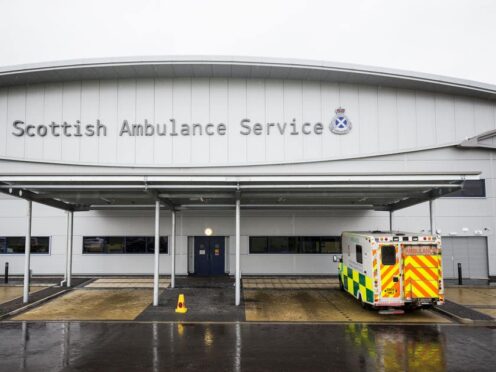
Ambulance waiting times for patients categorised as “critically ill” increased in almost every Scottish local authority over a five-year period, according to new figures.
The Scottish Liberal Democrats have demanded an inquiry into avoidable deaths caused by lengthy blue light waits.
Between 2019 and 2023, the Scottish Ambulance Service’s response times to purple calls – where patients are identified as having a 10% or more chance of having a cardiac arrest – increased in every local authority area except Shetland, freedom of information figures obtained by the party revealed.
The cardiac arrest rate in this category is approximately 53%.
A patient in Glasgow waited two hours and one minute for a response to a critical call in 2023 – the highest of the year, followed by Aberdeen City with one hour and 54 minutes.
Over the same time period, 28 local authorities experienced an increase in average waiting times for red calls – the second most serious category.
Red calls are categorised when a patient has between a 1% and 9.9% likelihood of cardiac arrest, or having a need for resuscitation interventions.
A Highland patient waited eight hours and 58 minutes for a response in this category, followed by eight hours and 55 minutes in Aberdeen.
Red level waits did not increase in Edinburgh, Midlothian, West Dunbartonshire and West Lothian.
The longest waiting time for any call – which includes less serious amber and yellow categories – was 1,066 minutes, or 17 hours, in 2023.
Mr Cole-Hamilton said: “If you call an ambulance at a moment of crisis, you want to know that someone will be there in time to help you as best they can. Tragically, this is simply not happening for so many people across Scotland.

“It is extremely worrying that high-risk callers in particular have had to wait more than an hour for help.
“The SNP continuously ignored ambulance staff, who have been warning of pressure cooker conditions for years. Their refusal to listen has caused intolerable pain for patients and put staff under extreme pressure.
“Scottish Liberal Democrats will continue to call for an inquiry into the hundreds of avoidable deaths linked to emergency care crisis, something which has been obstructed by nationalist MSPs who did not want to know.”
He said Health Secretary Neil Gray must “recognise the pressures the service is under and look again at what needs to be done to improve life for both patients and staff”.
“Swift action could make all the difference between life and death,” he added.
A Scottish Ambulance Service spokeswoman said: “It is unfortunate that the statistics are being presented in this manner, it is not accurate or a fair reflection of our hard-working teams.
“The figures quoted in this FOI relate to where patients present with a less urgent condition and subsequently their condition changes and our response increases accordingly. This is underpinned by regular communication and assessment of the patient’s condition by SAS, on these occasions only the total call time is shown.
“Our latest published statistics show our median response time for our most serious calls in Scotland is currently 6 minutes and 42 seconds and we have recruited 230 additional staff nationally over the past year. We also continue to work with hospitals who continue to have extended turnaround times.”

Enjoy the convenience of having The Sunday Post delivered as a digital ePaper straight to your smartphone, tablet or computer.
Subscribe for only £5.49 a month and enjoy all the benefits of the printed paper as a digital replica.
Subscribe